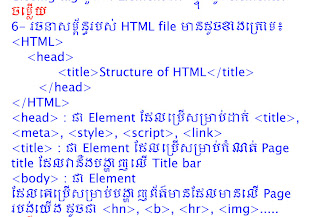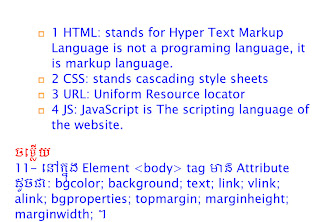"Professional JavaScript for Web Developers," 2nd Edition, provides a developer-level introduction along with the more advanced and useful features of JavaScript.
Starting at the beginning, the book explores how JavaScript originated and evolved into what it is today. A detailed discussion of the components that make up a JavaScript implementation follows, with specific focus on standards such as ECMAScript and the Document Object Model (DOM). The differences in JavaScript implementations used in different popular web browsers are also discussed.
Building on that base, the book moves on to cover basic concepts of JavaScript including its version of object-oriented programming, inheritance, and its use in various markup languages such as HTML. An in-depth examination of events and event handling is followed by an exploration of browser detection techniques and a guide to using regular expressions in JavaScript. The book then takes all this knowledge and applies it to creating dynamic user interfaces.
The last part of the book is focused on advanced topics, including performance/memory optimization, best practices, and a look at where JavaScript is going in the future.
This book is aimed at three groups of readers: Experienced developers familiar with object-oriented programming who are looking to learn JavaScript as it relates to traditional OO languages such as Java and C++Web application developers attempting to enhance the usability of their web sites and web applicationsNovice JavaScript developers aiming to better understand the language
In addition, familiarity with the following related technologies is a strong indicator that this book is for you: JavaPHPASP.NETHTMLCSSXML
This book is not aimed at beginners who lack a basic computer science background or those looking to add some simple user interactions to web sites. These readers should instead refer to Wrox's "Beginning JavaScript, " 3rd Edition (Wiley, 2007).
This book covers: What Is JavaScript?--Explains the origins of JavaScript: where it came from, how it evolved, and what it is today. Concepts introduced include the relationship between JavaScript and ECMAScript, the Document Object Model (DOM), and the Browser Object Model (BOM). A discussion of the relevant standards from the European Computer Manufacturer's Association (ECMA) and the World Wide Web Consortium (W3C) is also included.JavaScript in HTML--Examines how JavaScript is used in conjunction with HTML to create dynamic web pages. Introduces the various ways of embedding JavaScript into a page, including a discussion surrounding the JavaScript content-type and its relationship to the element.Language Basics--Introduces basic language concepts, including syntax and flow control statements. Explains the syntactic similarities of JavaScript and other C-based languages and points out the differences. Type coercion is introduced as it relates to built-in operators.Variables, Scope, and Memory--Explores how variables are handled in JavaScript given their loosely typed nature. A discussion about the differences between primitive and reference values is included, as is information about execution context as it relates to variables. Also, a discussion about garbage collection in JavaScript explains how memory is reclaimed when variables go out of scope.Reference Types--Covers all of the details regarding JavaScript's built-in reference types, such as "Object" and "Array." Each reference type described in ECMA-262 is discussed both in theory and how they relate to browser implementations.Object-Oriented Programming--Explains how to use object-oriented programming in JavaScript. Since JavaScript has no concept of classes, several popular techniques are explored for object creation and inheritance. Also covered is the concept of function prototypes and how that relates to an overall OO approach.Anonymous Functions--Explores one of the most powerful aspects of JavaScript: anonymous functions. Topics include closures, how the "this" object works, the module pattern, and creating private object members.The Browser Object Model--Introduces the Browser Object Model (BOM), which is responsible for objects allowing interaction with the browser itself. Each of the BOM objects is covered, including "window," "document," "location," "navigator," and "screen."Client Detection--Explains various approaches to detecting the client machine and its capabilities. Different techniques include capability detection and user-agent string detection. Each approach is discussed for pros and cons as well as situational appropriateness.The Document Object Model--Introduces the Document Object Model (DOM) objects available in JavaScript as defined in DOM Level 1. A brief introduction to XML and its relationship to the DOM gives way to an in-depth exploration of the entire DOM and how it allows developers to manipulate a page.DOM Levels 2 and 3 Explains how DOM Levels 2 and 3 augmented the DOM with additional properties, methods, and objects. Compatibility issues between Internet Explorer and other browsers are discussed.Events--Explains the nature of events in JavaScript, where they originated, legacy support, and how the DOM redefined how events should work. A variety of devices are covered, including the Wii and iPhone.Scripting Forms--Looks at using JavaScript to enhance form interactions and work around browser limitations. Discussion focuses on individual form elements such as text boxes and select boxes and on data validation and manipulation.Error Handling and Debugging--Discusses how browsers handle errors in JavaScript code and presents several ways to handle errors. Debugging tools and techniques are also discussed for each browser, including recommendations for simplifying the debugging process.XML in JavaScript--Presents the features of JavaScript used to read and manipulate eXtensible Markup Language (XML) data. Explains the differences in support and objects in various web browsers, and offers suggestions for easier cross-browser coding. This also covers the use of eXtensible Stylesheet Language Transformations (XSLT) to transform XML data on the client.ECMAScript for XML--Discusses the ECMAScript for XML (E4X) extension to JavaScript, which is designed to simplify working with XML. Explains the advantages of E4X over using the DOM for XML manipulation.Ajax and JSON--Looks at common Ajax techniques, including the use of the "XMLHttpRequest" object and Internet Explorer's "XDomainRequest" object for cross-domain Ajax. Explains the differences in browser implementations and support as well as recommendations for usage.Advanced Techniques--Dives into some of the more complex JavaScript patterns, including function currying, partial function application, and dynamic functions. Also covers creating a custom event framework to enable simple event support for custom objects.Client-Side Storage--Discusses the various techniques for storing data on the client machine. Begins with a discussion of the most commonly supported feature, cookies, and then discusses newer functionality such as DOM storage.Best Practices--Explores approaches to working with JavaScript in an enterprise environment. Techniques for better maintainability are discussed, including coding techniques, formatting, and general programming practices. Execution performance is discussed and several techniques for speed optimization are introduced. Last, deployment issues are discussed, including how to create a build process.Upcoming APIs--Introduces APIs being created to augment JavaScript in the browser. Even though these APIs aren't yet complete or fully implemented, they are on the horizon and browsers have already begun partially implementing their features. Includes the Selectors API and HTML 5.The Evolution of JavaScript--Looks into the future of JavaScript to see where the language is headed. ECMAScript 3.1, ECMAScript 4, and ECMAScript Harmony are discussed.
 ']]}
']]}























































